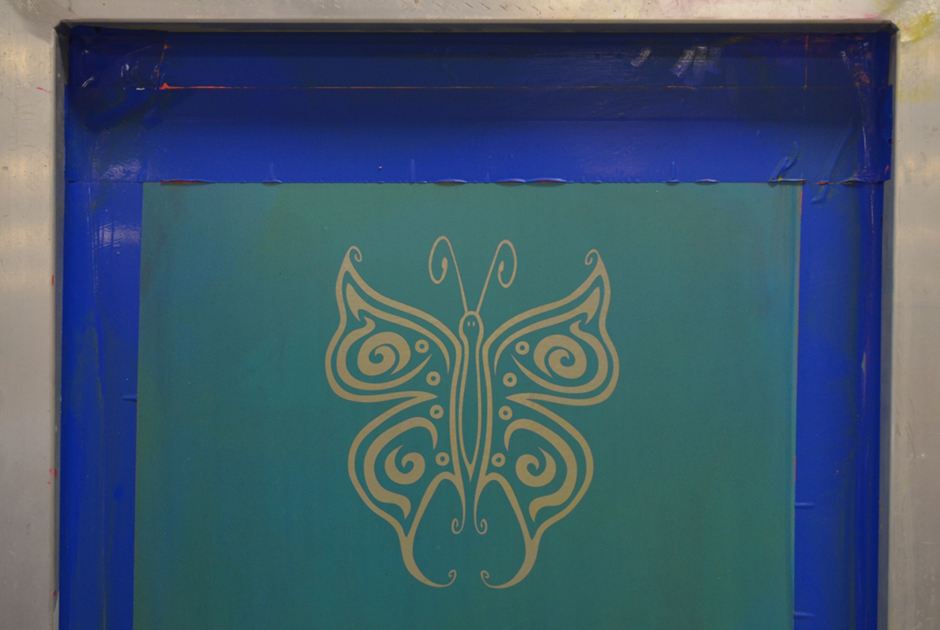Screen printers face a variety challenges, but there is a solution for every issue; you just have to know where to look.
Pinholes represent a common screen-printing issue. They are a stencil defect that reduces production efficiency and print quality. These imperfections in the stencil are tiny, transparent dots that appear in the screens after exposure. Printers who battle pinholes spend more time and money trying to complete a job.
The causes of pinholes are:
• Mesh contamination
• Poor drying after degreasing
• Dirty screen making area
• Improperly prepared emulsion
• Particles in emulsion
• Poor emulsion
• Improper coating
• Incomplete drying before exposure
• Improper exposure time
• Contaminated exposure glass
How to Avoid Pinholes
When it comes to mesh contamination, there are a few things you can do to minimize it. First, ensure you have thoroughly degreased and rinsed the screens, even if the mesh is brand new. Manufacturers use chemicals and lubricants that can remain in the fibers even if the screen has been rinsed. Dust, dirt and general grime will accumulate on the screen from manufacturer to distributor.
By the time you get the screens, it’s likely they will need cleaning. After doing this, remember to store them properly. If your screens are kept out in the open, there is more opportunity for them to be contaminated.
When cleaning the screen, wash both sides of the mesh. Rinsing with a pressure washer also will help dislodge any particles that you may not see. After doing a hard rinse, follow up with a soft rinse to remove any contamination that may have blown onto the screen from the washout booth.
A word on washout booths: If you are using one washout booth for all steps of the reclaiming process — including degreasing, developing, reclaiming, and ink and haze removal — you should clean the washout booth daily to remove those chemicals and reduce the chance of contaminating future screens.
A common drying technique is to place screens on the floor or table in front of fans if the shop doesn’t have access to a screen-drying cabinet. The problem with this is that the shop’s probably is the dirtiest place to put screens. The best practice to keep screens in a drying cabinet to avoid contamination. If you can’t justify the expense of a screen-drying cabinet, try using a wet/dry vacuum to remove the water from the screens; just ensure the tip of the wand is clean.
When using a diazo sensitizer, distilled water is recommended. Tap water tends to have a high iron content, which can have adverse effects on the emulsion. After mixing the diazo-emulsion solution, let the emulsion rest to allow air bubbles to escape. Coating the screen with emulsion too quickly will cause air bubbles and poor coverage. Take your time when coating screens to ensure quality coverage. Use a scoop coater with an edge diameter suitable for the mesh you are using.
If the emulsion is not absolutely dry by the time the screen is placed into the exposure unit, you will have problems with underexposure, which is a major problem when getting started in screen printing.
Quick Fixes
Once screens are made, don’t panic if you see pinholes. The following solutions can keep you going.
1. Blockout Pens: These fast-drying — usually in about 30 seconds — pens are water-soluble. The greatest aspect of a blockout pen is its size. They are great for on- or off-the-press touch-ups. Once you find a pinhole, you can easily touch it up, let it dry and keep going. Blockout pens resist plastisol, ultraviolet and most solvent-based inks on the market.
2. Blockout Liquid: If you prefer keeping stock on hand, then keeping a gallon of blockout liquid on hand may provide the best bang for your buck. This water-soluble liquid not only covers up pinholes, but it also can cover emulsion breakdowns. Blockout liquids typically don’t have a smell, making it perfect to use in unventilated areas. Certain types only work with plastisol ink because water-based ink could dissolve the blockout, so remember to consult your supplier.
3. Tape: While using tape to cover pinholes can work in a pinch, it could be a tricky practice and isn’t fool proof. The biggest issue is that the squeegee could pull the tape up, thus exposing the garment underneath to the ink.
4. A Finger: If you don’t have any tape, blockout liquid or blockout pens at your disposal, you can always dip your finger into the emulsion and dab it on the pinhole. Then, place the screen in sunlight to let it dry. Just remember to wash the emulsion off your finger (as long as it hasn’t been exposed to direct sunlight), or you can let it dry and peel it off. If you do the latter, remember to wash your hands.





